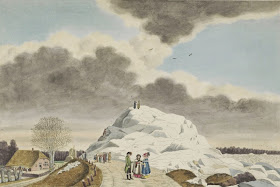Japan:
20 years after Kobe quake, world rethinks disaster risk Earthquakes expose economic vulnerability to disaster events like no other natural hazard, with the possible exception of recurring extensive floods. They also demonstrate the futility of trying to implement building codes without the buy-in of the private sector. The private sector is responsible for 70 to 85 percent of overall investment in most economies.
USA:
Going with the flow: Is river basin management misguided?
Rescuing farmland after a flood
Other:
Pakistan's coastal villagers retreat as seas gobble land
Greenland Ice: The warmer it gets the faster it melts
Better dam planning strategies
Long list of sustainable development goals likely to stay, UNDP says
Russia's forests overlooked in climate change fight
20 years after Kobe quake, world rethinks disaster risk Earthquakes expose economic vulnerability to disaster events like no other natural hazard, with the possible exception of recurring extensive floods. They also demonstrate the futility of trying to implement building codes without the buy-in of the private sector. The private sector is responsible for 70 to 85 percent of overall investment in most economies.
USA:
Going with the flow: Is river basin management misguided?
Rescuing farmland after a flood
Other:
Pakistan's coastal villagers retreat as seas gobble land
Greenland Ice: The warmer it gets the faster it melts
Better dam planning strategies
Long list of sustainable development goals likely to stay, UNDP says
Russia's forests overlooked in climate change fight
Malawi floods raise fears of cholera outbreak, poor harvest
Thousands stranded in Malawi as floods trigger "slow tsunami"
Thousands stranded in Malawi as floods trigger "slow tsunami"
More rains, more deaths as floods across southern Africa set to worsen Malawi, one of the poorest countries in the world with a population of 16 million, has been hardest hit, with at least 176 confirmed dead and 121,000 displaced.
States, donors must do more to tackle rising disaster risk - UN According to a 2013 report from the London-based Overseas Development Institute, the international community spent $13.5 billion on reducing the risk of damage from disasters in the past two decades - just 40 cents for every $100 of aid.
Toward Resilience: A Guide to Disaster Risk Reduction and Climate Change Adaptation
Board game puts new spin on competitive land-use dynamics
States, donors must do more to tackle rising disaster risk - UN According to a 2013 report from the London-based Overseas Development Institute, the international community spent $13.5 billion on reducing the risk of damage from disasters in the past two decades - just 40 cents for every $100 of aid.
Toward Resilience: A Guide to Disaster Risk Reduction and Climate Change Adaptation
Board game puts new spin on competitive land-use dynamics


